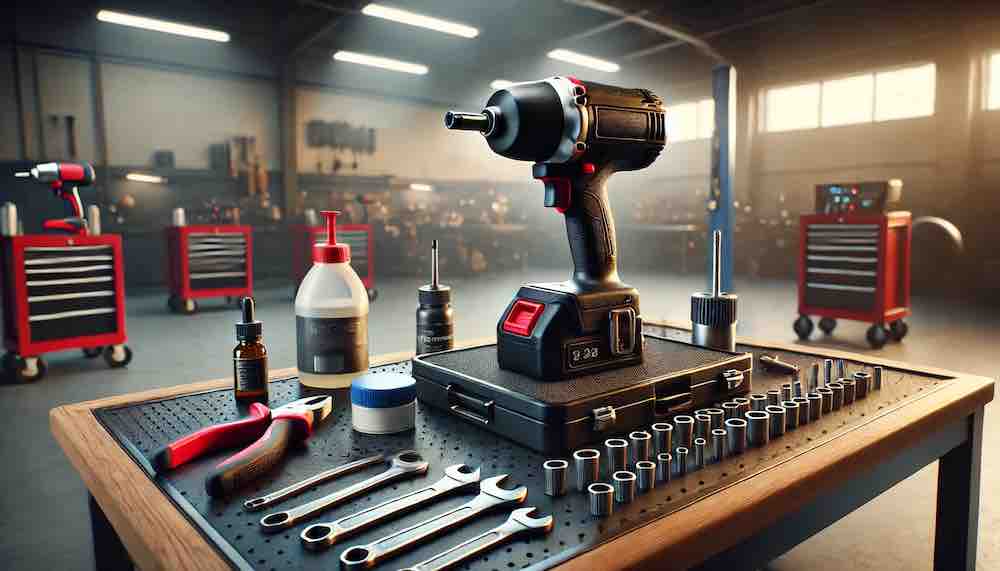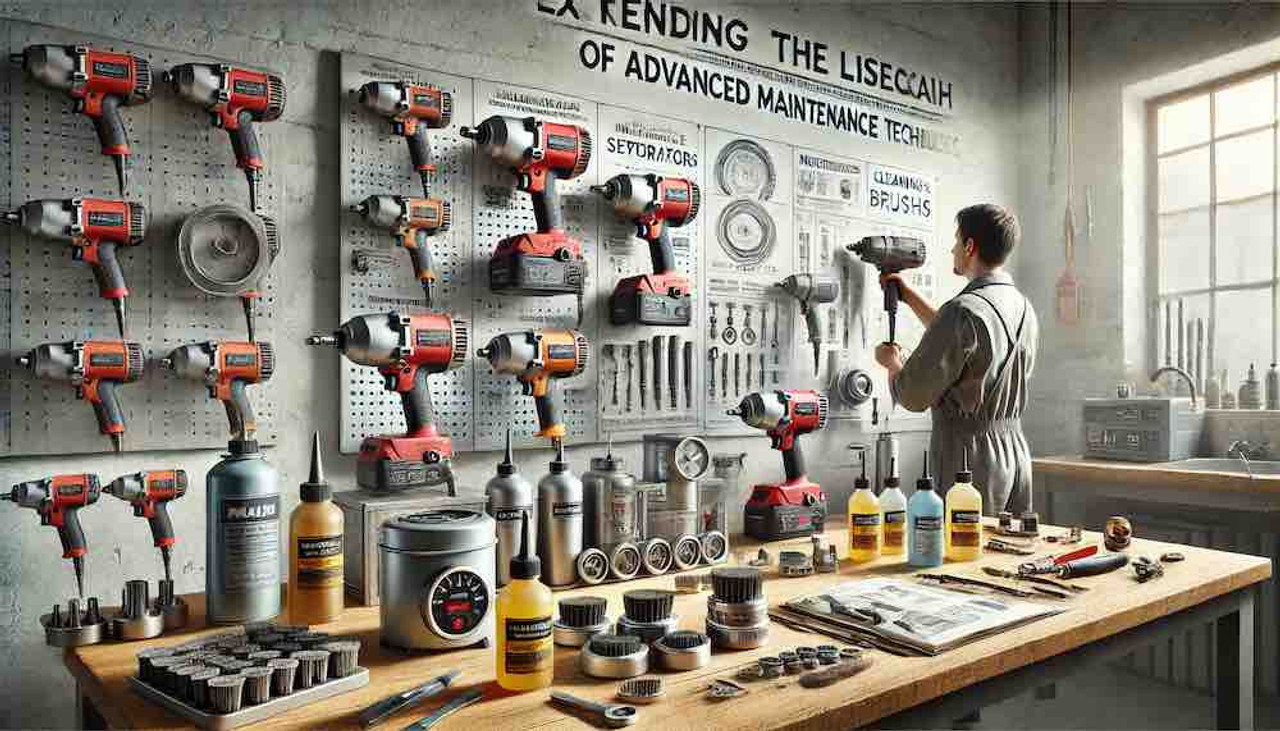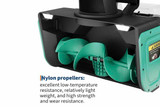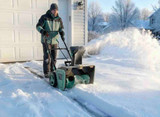Extending Air Tool Lifespan: Advanced Maintenance Techniques
- Maximizes tool efficiency and power output
- Minimizes downtime and repair costs
- Enhances workplace safety
- Extends the overall lifespan of your investment
Precision Lubrication: The Lifeblood of Air Tools
- Viscosity appropriate for your tool's speed and application
- Temperature resistance for your working environment
- Additives for rust and corrosion protection
- Deliver the exact amount of oil needed
- Reduce human error in lubrication
- Ensure continuous protection during operation
- Tool usage frequency
- Operating conditions
- Manufacturer recommendations
Advanced Cleaning Protocols: Beyond the Surface

- Removes stubborn dirt and debris
- Reaches areas inaccessible by manual cleaning
- Is gentle on delicate parts
- Remove moisture and contaminants
- Prevent internal corrosion
- Ensure smooth operation of moving parts
- Dissolve tough grease and grime
- Are safe for tool materials
- Leave a protective residue to prevent future buildup
- Precision Air Management: Quality Air for Quality Performance
- Particulate filters to remove solid contaminants
- Coalescing filters to eliminate oil mist
- Activated carbon filters for odor and vapor removal
- Prevents internal rust and corrosion
- Improves tool performance
- Extends the life of seals and O-rings
- Use digital pressure gauges for accurate readings
- Install pressure regulators at each workstation
- Monitor and adjust pressure based on tool requirements and ambient conditions
- Predictive Maintenance with IoT and AI
- Vibration patterns
- Temperature fluctuations
- Usage hours and patterns
- Predict potential failures before they occur
- Optimize maintenance schedules
- Identify patterns that lead to tool wear
- Simulate wear and tear under various conditions
- Test maintenance strategies virtually
- Optimize tool performance in real-time
- Component-Level Maintenance: Diving Deeper
- Borescopes for visual examination of internal components
- Ultrasonic testing to detect hidden cracks or weaknesses
- Thermal imaging to identify hotspots or friction issues
- Reduce vibration and wear
- Improve tool accuracy and performance
- Extend the life of bearings and other moving parts
- Identify critical components with limited lifespans
- Replace parts before they fail based on usage data and manufacturer recommendations
- Keep a stock of high-quality replacement parts for minimal downtime
Environmental Control: Creating the Ideal Habitat
- Prevent rust and corrosion
- Maintain proper lubrication viscosity
- Protect sensitive electronic components
- Reduce wear on internal components
- Improve tool accuracy
- Minimize operator fatigue
- Prevent interference from nearby equipment
- Protect against power surges
- Ensure consistent performance
- Operator Training and Certification: The Human Element
- Proper tool handling and operation
- Recognizing early signs of wear or malfunction
- Basic troubleshooting and maintenance procedures
- Ensure consistent maintenance practices across your organization
- Foster a culture of tool care and responsibility
- Stay up-to-date with the latest maintenance techniques and technologies
- Identify areas for improvement
- Reinforce best practices
- Recognize and reward exemplary tool care
- Comprehensive Documentation and Analysis
- Maintenance schedules and history
- Part replacements and repairs
- Performance metrics over time
- Identify patterns of wear or inefficiency
- Optimize maintenance schedules
- Make informed decisions on tool replacement or upgrades
- Compare maintenance costs to tool replacement costs
- Evaluate the impact of downtime on productivity
- Adjust your maintenance strategy based on financial and operational data
- Q: How often should I perform internal inspections on my air tools? A: The frequency depends on usage, but generally, thorough internal inspections are performed every 500-1000 hours of use or annually, whichever comes first.
- Q: Can I use regular motor oil to lubricate air tools? A: No, it's not recommended. Use oils specifically designed for air tools with the right viscosity and additives to protect against moisture and wear. Learn more aboutthe lubrication of air tools
- Q: How do I know if my compressed air is clean enough for my tools? A: Regularly test your air quality using air quality test kits. Look for ISO 8573-1 Class 1.4.1 or better for most precision air tools.
- Q: Is investing in IoT and AI for air tool maintenance a good idea? A: For large operations or critical applications, the predictive capabilities can significantly reduce downtime and extend tool life, often justifying the investment.
- Q: How can I extend the life of O-rings and seals in my air tools? A: Use the correct lubricants, maintain proper air quality (especially moisture levels), and replace them preemptively based on usage rather than waiting for failure. Read more about part replacement in air tools
Air tools are invaluable assets known for their power, precision, and versatility. However, implementing advanced maintenance techniques is crucial to ensuring these tools remain reliable and efficient throughout their lifespan. This comprehensive guide will explore cutting-edge strategies to extend the life of your pneumatic tools, building upon the foundation of basic care to elevate your maintenance routine to professional standards.
Key Takeaway
Extending the lifespan of air tools requires a multifaceted approach combining advanced lubrication, cleaning, air management, predictive maintenance, component-level care, environmental control, and ongoing operator training. By implementing these techniques and leveraging the resources available at Tend Industrial Supplies, you can significantly enhance your air tools' longevity, performance, and reliability, leading to improved productivity and reduced operational costs.
The Importance of Advanced Air Tool Maintenance
While basic maintenance practices are essential, as outlined in our previous guide, "Breathe Easy: Maintenance Best Practices for Pneumatic Tools," advanced techniques can significantly enhance your tools' performance and longevity. Proper maintenance:
Let's delve into advanced techniques that will keep your air tools operating at peak performance for years.
Lubrication is fundamental to air tool maintenance, but precision in this process can make a substantial difference.
Advanced Lubrication Techniques:
a) Tailored Oil Selection Choose lubricants specifically designed for air tools, considering:
Learn more about selecting the right lubricant
b) Automated Lubrication Systems Invest in inline oilers or automated lubrication systems for consistent, precise oiling. These systems:
c) Lubrication Scheduling Develop a detailed lubrication schedule based on:
Use digital maintenance tracking systems to ensure no tool misses its lubrication cycle.
Building on thedaily cleaning routines mentioned in our basic guide, implement these advanced cleaning techniques:
a) Ultrasonic Cleaning Use ultrasonic cleaners for deep cleaning of internal components. This method:
b) Compressed Air Purging Regularly purge your tools with clean, dry compressed air to:
c) Specialized Cleaning Solutions Use manufacturer-approved cleaning solutions designed for air tools. These solutions:
Air quality supplied to your tools significantly impacts their performance and lifespan. Implement these advanced air management techniques:
a) Multi-Stage Filtration Install a multi-stage filtration system including:
b) Refrigerated Air Dryers: Use refrigerated air dryers to remove moisture from your compressed air system. This:
Learn more about moisture management
c) Pressure Regulation and Monitoring Implement precise pressure regulation and monitoring:
Embrace the power of technology to predict and prevent tool failures:
a) IoT Sensors Attach IoT sensors to your air tools to monitor:
b) AI-Driven Analytics Use artificial intelligence to analyze sensor data and:
c) Digital Twin Technology Create digital twins of your air tools to:
Go beyond surface-level maintenance with these advanced techniques:
a) Regular Internal Inspections Perform periodic internal inspections using:
b) Precision Balancing Regularly balance rotating components to:
c) Preventive Part Replacement Implement a proactive part replacement strategy:
Explore our guide on replacing wearable parts in air tools
The environment in which air tools are stored and operated plays a crucial role in their longevity:
a) Climate-Controlled Storage Store air tools in a climate-controlled environment to:
Learn more about appropriate tool storage of air tools
b) Vibration Dampening Use vibration dampening mounts and pads to:
c) Electromagnetic Protection Implement electromagnetic shielding for tools with sensitive electronic components to:
Even the best maintenance techniques are only as good as the people implementing them:
a) Advanced Operator Training Provide comprehensive training on:
b) Certification Programs Implement certification programs for operators and maintenance personnel:
c) Regular Skill Assessments Conduct periodic skill assessments to:
Maintain detailed records of tool maintenance and performance:
a) Digital Maintenance Logs Use digital platforms to track:
b) Performance Trending Analyze tool performance data to:
c) Cost-Benefit Analysis Regularly assess the cost-effectiveness of your maintenance program:
FAQs:
Ready to take your air tool maintenance to the next level? Tend Industrial Supplies offers a comprehensive range of advanced maintenance products and expert advice to help you maximize the lifespan of your air tools. Visit tendsupplies.com to explore our selection of premium lubricants, filtration systems, and maintenance tools. For personalized recommendations and support, contact our team of air tool specialists at sales@tendsupplies.com. Let us help you implement these advanced techniques and keep your air tools performing at their best for years.







